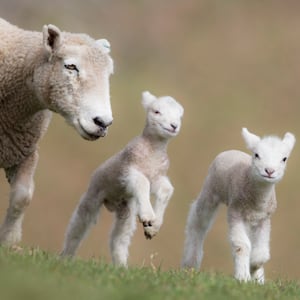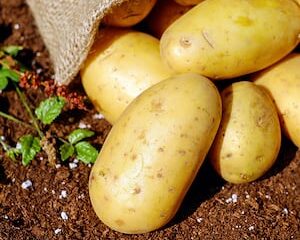World
Exploring 1930s Docking Practices for Enhanced Lamb Survival

In a retrospective look at farming practices, researcher Kem Ormond examines newspaper articles from the 1930s that detail the procedures for docking lambs. This historical insight sheds light on how farmers approached lamb survival during that era and highlights the communal effort often involved in this essential task. The findings reveal that many methods used for docking in the 1930s remain consistent with modern practices, emphasizing the enduring nature of agricultural traditions.
Historical Context of Docking Practices
Docking, which involves the removal of part of a lamb’s tail, has long been regarded as a critical procedure in sheep husbandry. The primary purpose is to reduce the risk of flystrike, a condition that can severely affect lamb health. In the 1930s, farmers relied on similar techniques to those used today, showcasing a remarkable continuity in agricultural practices across generations.
According to Ormond, the community aspect of docking has been a cherished tradition on farms. Families and friends would gather during docking season to assist one another, fostering a sense of camaraderie and shared responsibility. This cooperative spirit not only made the task more manageable but also reinforced social bonds within farming communities.
Modern Implications and Practices
Despite the passage of decades, the setup for docking remains strikingly similar. Ormond notes that portable docking yards were often established centrally on farms for ease of access, allowing farmers to efficiently pen the lambs and ewes with minimal fuss. This logistical consideration has proven to be a timeless strategy, enhancing both the safety and welfare of the animals.
The methods employed today include various pain management practices, reflecting a growing awareness of animal welfare. While the core procedures have not changed dramatically, advancements in veterinary care and ethical considerations have led to improved outcomes for lambs during the docking process.
This examination of historical docking practices not only highlights the importance of tradition in farming but also encourages contemporary farmers to reflect on the evolution of their techniques. As agricultural practices continue to develop, the lessons learned from the past can guide future improvements in livestock management and animal welfare.
Overall, Ormond’s research serves as a reminder of the enduring nature of farming traditions and the communal values that have shaped agricultural practices over the years. The collaborative effort in docking lambs remains a testament to the close-knit relationships within farming families, bridging generations and preserving vital knowledge for years to come.
-

 World2 weeks ago
World2 weeks agoPrivate Funeral Held for Dean Field and His Three Children
-

 Top Stories3 weeks ago
Top Stories3 weeks agoFuneral Planned for Field Siblings After Tragic House Fire
-

 Sports3 months ago
Sports3 months agoNetball New Zealand Stands Down Dame Noeline Taurua for Series
-

 Entertainment3 months ago
Entertainment3 months agoTributes Pour In for Lachlan Rofe, Reality Star, Dead at 47
-

 Entertainment2 months ago
Entertainment2 months agoNew ‘Maverick’ Chaser Joins Beat the Chasers Season Finale
-

 Sports3 months ago
Sports3 months agoSilver Ferns Legend Laura Langman Criticizes Team’s Attitude
-

 Sports1 month ago
Sports1 month agoEli Katoa Rushed to Hospital After Sideline Incident During Match
-

 World4 weeks ago
World4 weeks agoInvestigation Underway in Tragic Sanson House Fire Involving Family
-

 Politics2 months ago
Politics2 months agoNetball NZ Calls for Respect Amid Dame Taurua’s Standoff
-

 Top Stories3 weeks ago
Top Stories3 weeks agoShock and Grief Follow Tragic Family Deaths in New Zealand
-

 Entertainment4 months ago
Entertainment4 months agoKhloe Kardashian Embraces Innovative Stem Cell Therapy in Mexico
-

 World4 months ago
World4 months agoPolice Arrest Multiple Individuals During Funeral for Zain Taikato-Fox











